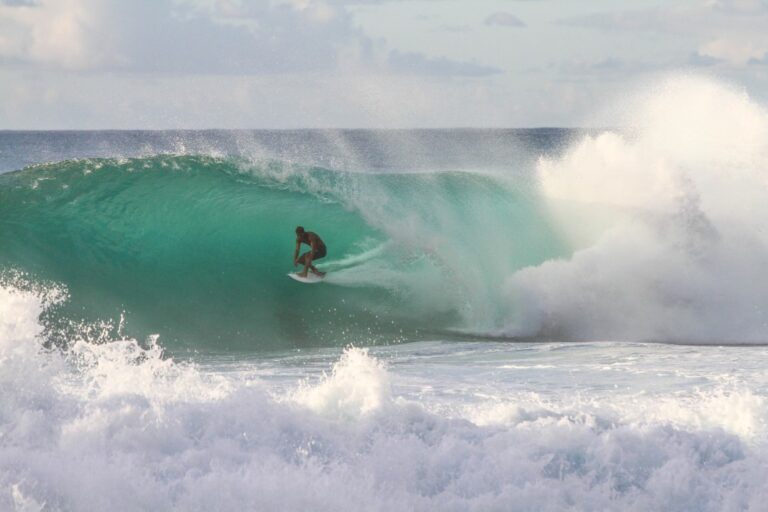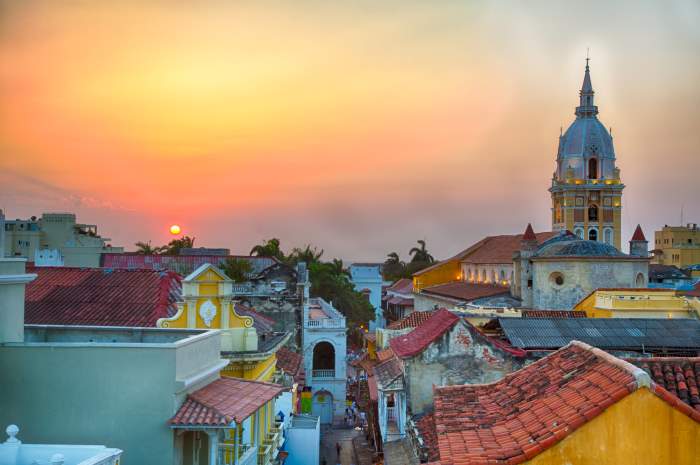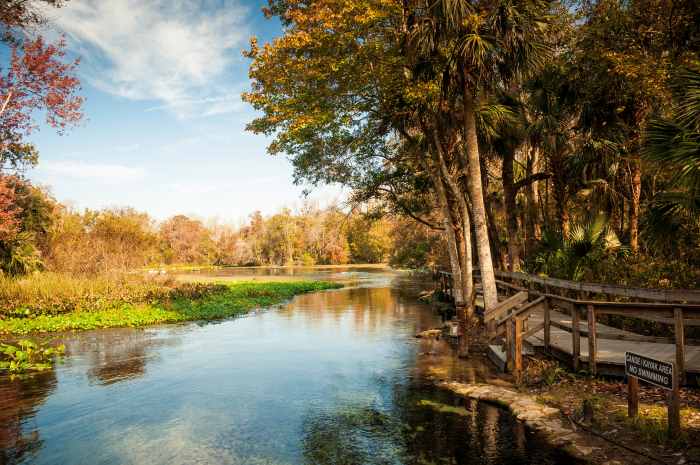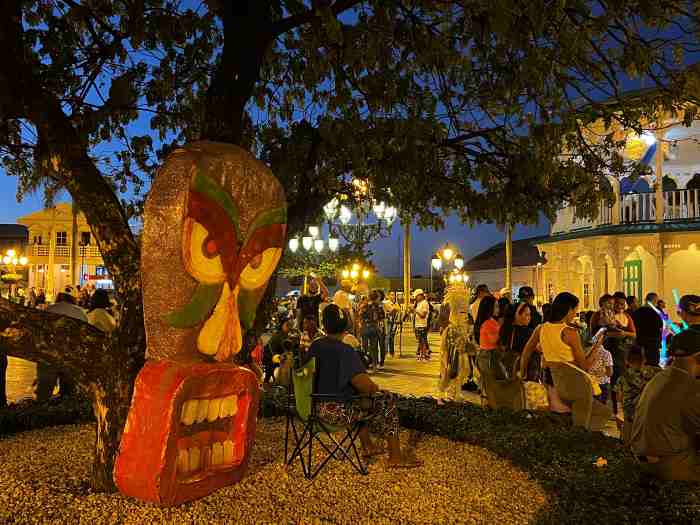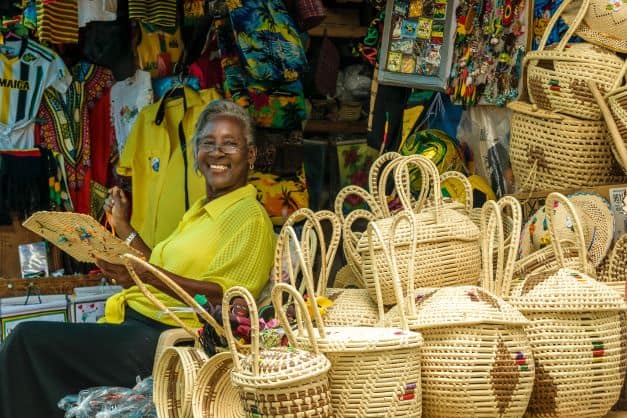Nestled in the heart of the Caribbean, Cuba stands as a centerpoint of history, culture, and an abundance of natural beauty. There are a vast variety of enigmatic Cuba landmarks to explore for travelers.
Beyond the myths of the Revolution, renowned cigars, rum, and salsa rhythms, this island nation is home to a rich heritage you may not be aware of.
After having traveled to Cuba for five years, I can proudly say I have visited many of them.
Join me on a short virtual journey to Cuba as we explore the most famous landmarks that have importance for this island, including historical, religious, and vibrant and colorful culture.

1. The Malecón: Where the Sea Embraces Havana’s Soul

Ah, the Malecón! This legendary seawall in Havana is more than just a stretch of concrete overlooking the sea; it’s a testament to the beating heart of the city.
Truth be told, the current version of the Malecon has seen better days, and it is a bit worn down like many of the streets and neighborhoods of Havana.
Still, locals gather here in the evenings, especially on the weekends, to share stories, musicians strum their guitars, and waves crash with rhythmic precision.
As the sun slowly dips below the horizon, painting the sky in vivid hues, you can head over here with a bottle of rum and Cuba cola, sit on the wall, and just watch the sun disappear in the direction of Miami.
2. El Morro and La Cabaña: Sentinels of Havana’s Heritage

Perched majestically on the cliffs of Havana, El Morro, and La Cabaña forts stand as guardians of a storied past on the opposite side of the entrance to Havana Harbor.
To get over here, you need to get a taxi (or the local bus) under the subsea tunnel, and right on the other side, you can visit both.
The Morro, or El Morro, is the lighthouse on the tip of the bay that has been the lookout for danger ever since the Spanish and the English ended up in battles centuries ago.
The bigger fortress structure, La Cabana, a few hundred yards further in, is where you can see how the soldiers lived way back then.
Every night at 9 p.m., there is a ceremony at La Cabana where they fire off a salute that can be heard all over the city.
3. The Capitolio: A Cuba Landmark of History and Architecture

While visiting Havana, you should visit the Capitolio, the former parliament building that is a magnificent edifice in the heart of the city.
Its stunning architecture, reminiscent of the Pantheon in Paris, is a testament to Cuba’s colonial history and cultural heritage. At first glance, the building looks like a replica of the white house in Washington D.C, and truth be told, it is not very different.
In fact, there are only a few yards here and there that separate the two buildings visually. Yet, the architect insists that his inspiration was the Pantheon in Paris.
I don’t know what the Pantheon or the White House looks like on the inside, but the Capitolio has grandeur, elegance, and exquisite pieces of art on the inside.
Join an organized tour inside the Capitolio to wander through its marble halls, golden statues, and Km Zero of Cuba. You can get tickets from the booth outside.
📍 Quick guide for Cuba travel:
- Buy a Cuban Tourist Card
- If you are a U.S. national or travel via the U.S., you need to get the PINK tourist card
- If you are a U.S. national or travel via a U.S. airport, you need to choose one of the preapproved reasons for Cuba travel. The most common reason is “travel to help the Cuban people”.
- Get travel insurance with health coverage
- Book the flight, and a casa particular, or a hotel
- Register your entry to Cuba online on d’viajeros
- Consider getting a VPN that works well enough in Cuba
- Make sure your passport is valid for at least 6 months more
- Remember that you will only be able to get Cuban peso CUP when in Cuba. Bring all the foreign currency you plan to spend in cash, Canadian dollars, US dollars, or euros.
- Bring all the medicine you sometimes or regularly use. Cuban pharmacies are empty; you will not be able to get anything when in Cuba
- Bring a water bottle with a filter to ensure you always have access to drinking water
- Check out my best advice for Packing for Cuba here!
- Also read about Money In Cuba & Wifi In Cuba before you go!
4. Museum of the Revolution: Where History Comes Alive

Step into the Museum of the Revolution in Havana and be prepared to be immersed in Cuba’s tumultuous modern history.
You may have read about the Cuban Revolution at school or in historical articles, and chances are the scope of the story sounds different from within Cuba than what you have heard from the outside.
The Museum of the Revolution is in a mansion that was formerly the house of the president of Cuba.
Today, it tells the story, from a Cuban perspective, of the revolts against colonial oppression to the revolutionary fervor that swept the nation.
This museum offers a vivid tableau of Cuba’s historical path to independence from colonialism and then the rugged but very different periods of the first and second half of the 20th Century.
Photographs, artifacts, and interactive exhibits breathe life into the stories of heroes who shaped the nation’s destiny.
5. Havana Old City: A Stroll Through Time-Worn Streets
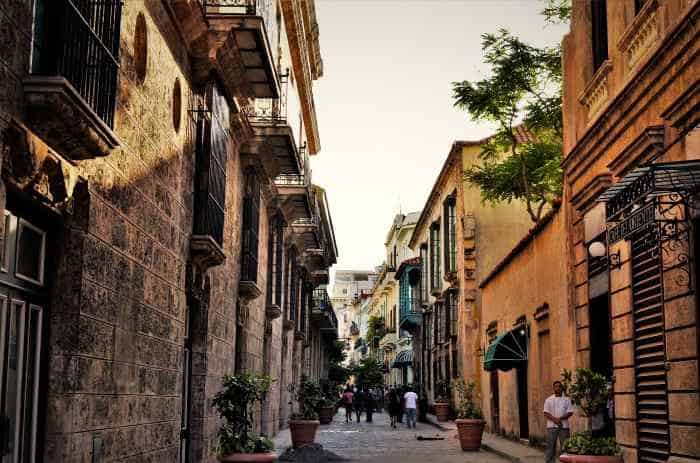
The Old City of Havana is a testament to the centuries of colonial period in Cuba.
Everywhere, there are signs of the Golden Era for the colonial powers, exquisite details in art and architecture, as well as tremendous decay that gave away the development of Cuba after the revolution.
Wandering through the sometimes cobbled streets, you’ll feel like you’ve stepped into a picturesque postcard in some parts, while others seem to be falling apart completely. Yet, music and dance are present from almost every doorway.
I recommend you do an organized walking tour; if you are by yourself, you can easily get lost. Also, you will miss out on the stories and anecdotes your guide will give you along the way!
See the Plaza de la Catedral, Plaza de Armas, the old city fortresses, Plaza Vieja, and all the historic, more or less famous sites of Old Havana.
Popular tour: Top-Rated: Culture Contrast Tour
6. The Mogotes of Vinales Valley Protected By UNESCO

Viñales Valley, located in western Cuba, is a breathtaking natural wonder renowned for its unique landscape of towering limestone formations known as mogotes.
These dramatic hills rise abruptly from the valley floor, creating an interesting contrast against the lush, green surroundings.
Vinales was named a UNESCO World Heritage Site in 1999 and is not only a testament to the beauty of nature but also to the cultural significance of the area.
The valley is home to traditional tobacco farming, which has been practiced for centuries and is still done the old way. You can learn how to do it, too, if you visit.
Explore the little town, take in the stunning vistas, and venture into the numerous caves that dot the landscape.
Also read: What Is The National Flower Of Cuba?
7. Trinidad Colonial Old City Is A Cuba Landmark of a Bygone Era
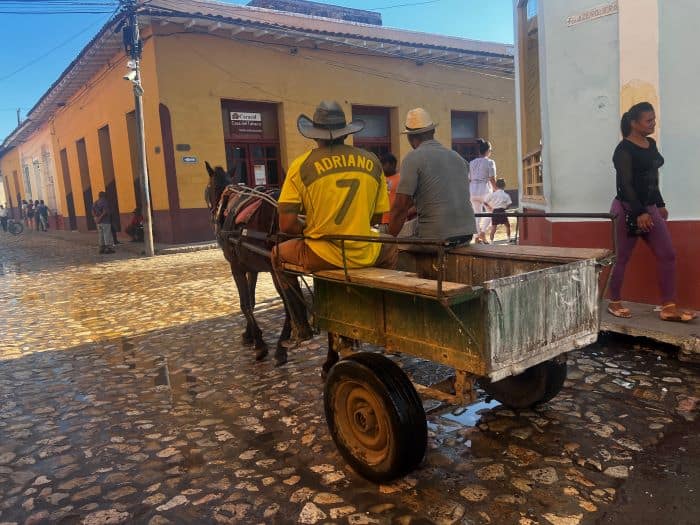
Trinidad is a Cuban gem steeped in history and colonial charm. Nestled on the southern coast of the island, it boasts cobblestone streets, vibrant facades, and well-preserved Spanish colonial architecture.
One of its most iconic landmarks is Plaza Mayor, the central square, surrounded by colorful buildings and the impressive Palacio Cantero, now home to the Museo Romántico.
The town is also known for its grand churches, including the Church of the Holy Trinity and the Church and Convent of St. Francis, where you can climb the stairs to the top.
Trinidad’s history, with the sugar trade and slave labor, played a significant role in Cuba’s former wealth. When the country fell out of the sugar trade competition, it became a “forgotten city”, which is why its colonial heritage is so well preserved today.
The nearby Valle de los Ingenios, the valley of the sugar mills, is a UNESCO-protected site, providing a glimpse into the sugar plantation era.
Popular tour: Classic Car Ride to Playa Ancon outside Trinidad
8. Santa Clara: Where Revolution Was Sealed
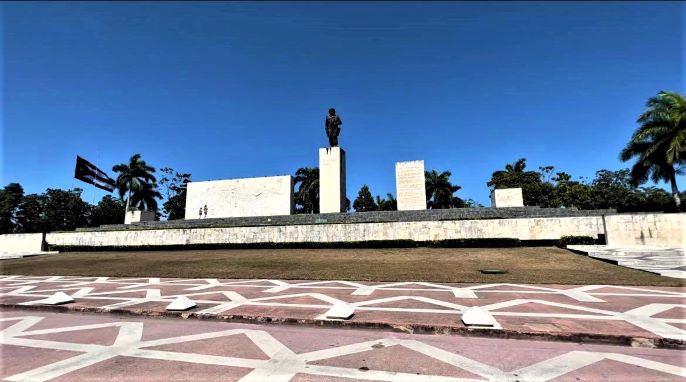
Santa Clara, located in central Cuba, holds significant historical importance as the site of the last and decisive battle of the Cuban Revolution in December 1958.
This pivotal clash saw Che Guevara and his rebel forces successfully derail an armored train, a move that crippled the government’s military capabilities and ultimately led to the downfall of the Batista regime.
The city now stands as a symbol of the revolution’s triumph and the enduring legacy of Che Guevara. He is buried in Santa Clara, in a spectacular mausoleum that is an important landmark in Cuba today.
The city’s rich history and its role in the Cuban Revolution make it an important destination if you want to understand the country’s past and present. Do a private city tour to learn all about it.
Also read: Cuba in December: 10 Inside Tips, Weather, Events & Top Things To Do
9. Sierra Maestra, Gran Piedra and Castro’s Hideout: Secrets of the Revolution

The Sierra Nevada mountain range outside Santiago de Cuba is a breathtaking natural wonder and landmark known for its rich biodiversity, wildlife, and stunning landscapes.
Beyond its natural beauty, the Sierra Nevada holds a significant place in history as the headquarters and hiding place for Fidel Castro and his comrades during the 1950s.
This lush green terrain provided shelter where the dissidents of Batista planned their resistance operations. Finally, the revolution ultimately shaped the course of Cuban history and world events for decades to come.
Today, Sierra Nevada stands as a testament to both natural wonders like the Gran Piedra Peak and a significant event in Cuba.
10. The Fortress in Santiago de Cuba: Where Legends Were Forged
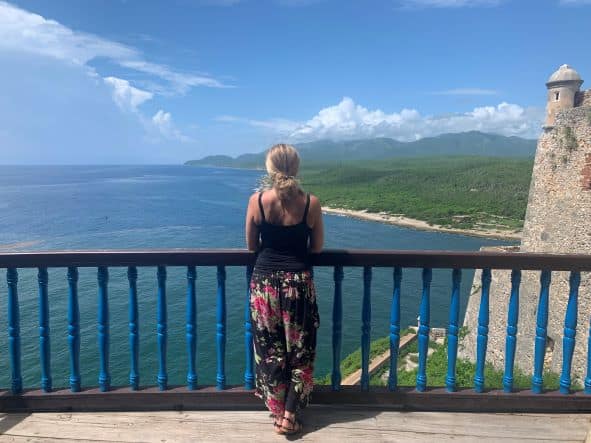
Castillo del Morro Fortress, an important Cuba landmark also known as San Pedro de la Roca Castle, stands proudly high, overlooking the entrance to Santiago de Cuba Bay.
Constructed in the 17th century, this formidable fortress was built to defend the city against marauding pirates and foreign invasions during a tumultuous period of Caribbean history.
Its strategic location made it a vital stronghold, protecting the city’s riches and providing a critical line of defense for the Spanish colonialists.
Today, Castillo del Morro stands as a UNESCO World Heritage Site. Its well-preserved architecture and spectacular views of the Caribbean Sea are well worth a visit.
You can explore its ramparts, dungeons, and historic exhibitions. From lookout points at the fortress, you will have a breathtaking panoramic vista of the sea, the shore, and the entrance to Santiago.
11. Santa Ifigenia Cemetary In Santiago de Cuba

Santa Ifigenia Cemetery, nestled in the vibrant city of Santiago de Cuba, is a venerable last resting place for many prominent figures in Cuban history.
Established in 1868, this cemetery holds the memories of countless individuals who played pivotal roles in shaping the nation.
Among them lies Carlos Manuel de Céspedes, a revered leader during the Ten Years’ War. Nearby is José Martí, the “father of Cuba,” resting.
The most iconic figure here is Fidel Castro, who led the Cuban Revolution in 1959 and Cuba for decades, which makes this place an important Cuba landmark.
His mausoleum draws visitors from around the world. If you choose to visit, you should make sure you see the guard-changing ceremony that takes place every 30 minutes throughout the day.
FAQs Cuba
What Is The Best Time To Visit Cuba?
There are two seasons in Cuba: wet and dry. The wet season runs from around May through October and November, while the dry season in Cuba starts in December and runs through April (May).
My advice for the best time to visit is February through April. The temperatures will be nice, you will avoid heavy afternoon showers and hurricane season, and crowds will be fewer.
Here are three frequently asked questions about Cuba’s landmarks, along with detailed answers:
What are the must-visit historical landmarks in Havana?
Havana is quite unique in world history, both from centuries ago and the last six decades. You find traces of both this history and culture, with several iconic landmarks, of which several are protected on the UNESCO World Heritage Site list. Highlights include:
- Old Havana (La Habana Vieja): A UNESCO World Heritage Site that is home to Plaza de la Catedral, Plaza Vieja (the old square), and the Castillo de la Real Fuerza.
- El Morro and La Cabaña Fortresses: The historic fortress structure that has protected Havana Bay for centuries, now you can go there to witness nightly cannon-firing ceremonies.
- The Malecón: A famous seaside promenade with stunning sea views and a lively atmosphere; although it is not the prettiest boardwalk in the world, it is probably the most unique one.
What is special about Viñales Valley?
Viñales Valley is also a UNESCO World Heritage Site, mainly because of its striking limestone mogotes (karst formations), and the famous Cuban cigars produced here.
Mogotes are small hills lying like sugar tops across the valley, and the tobacco fields stretch out across the plains with small farms and tobacco-drying barns everywhere.
In addition to that, you can explore caves, learn how to make cigars (and test puffing one), try the local rum and honey, and just enjoy the serene, beautiful scenery of this rural village.
Why is Trinidad a significant landmark in Cuba?
Trinidad is the best-preserved colonial town in Cuba, and the reason for this is that it landed in a quiet backwater as a Metropole (which it kind of was for some time) after Cuba was priced out of the sugar trade.
Here, you can stroll the old cobblestone streets, admire the well-kept architecture, and visit historic sites like the Plaza Mayor and Museo Romántico.
Close to Trinidad is also the Valley of the Sugar Mills, where you can see remnants of and learn about Cuba’s sugar trade history for better or worse, explore plantation ruins, and see the watchtower that used to call enslaved Africans to work some centuries ago.
Wrap-Up Famous Cuba Landmarks
From the unique colonial streets of Havana to the lush green landscapes of Viñales, where agriculture is still slow and hands-on, each corner of Cuba holds a story and a landmark waiting to be passed on!
Each of these unique Cuba landmarks around the largest island in the Caribbean tells its part of a chapter of Cuba’s remarkable story.
So, pack your bags and get ready for an epic journey that might leave you forever captivated by the enigmatic ambiance of Cuba.
Related blog posts:
How to get a tourist card for Cuba By An Expert (Easy Guide)


